For more than a century, the United States has intervened in the internal affairs of Nicaragua in various forms. They occupied the country militarily between 1912 and 1933. They supported the bloody dictatorship of Anastasio Somoza for 42 years (1937-1979). After the emergence of the Sandinista National Liberation Front (FSLN) and its accession to power in 1979, the US organized a counterrevolutionary army. Later, their intervention took place in more refined forms, within the framework of neoliberalism, through NGOs and the financing of media outlets and political parties. Today we are witnessing a new chapter in this story.
The US, the European Union and the OAS take the arrest of some oppositional figures, which committed serious crimes, as an excuse, complain of alleged human rights and rage against the government, replicating a well-known operation. Heading to presidential elections of November 2021, political pressure and economic-financial sanctions are advancing. Internally, disruptive devices are implemented, crisis scenarios are built, seeking international intervention, the erosion and demonization of the government, as well as the country’s international isolation.
Let’s look at some elements that will allow us to dismantle this model of imperial intervention that is presented as an ideal type, renewed under a new physiognomy. But Sandinismo knows that mechanism like the back of its hand.
The war against the Sandinismo
In the liberation war against Somoza, the Sandinismo and its revolutionary leadership articulated the action of the people and the anti-Somoza organizations in a mass insurgency that managed to defeat the dictatorship and seize power. The Sandinista project sought to build a mixed economy in a country devastated by war. Under a socialist model, it made huge and world-leading advances in people’s rights. Internationally, they held a position of non-alignment and good neighborliness with all countries. But problems and challenges arose from the get-go.
Ronald Reagan (1981-1989) started a Low Intensity War that was continued by George H.W. Bush (1989-1993). Washington invested millions of dollars in death squads known as Contras (short for “counterrevolutionaries” in Spanish), which resorted to terrorist tactics to overthrow the government. It was a fratricidal war with a cost of more than 50,000 deaths and almost a total destruction of the socio-economic infrastructure. The “contras” had an army of 20,000 well-armed men, with resources of all kinds, advice and training from Washington, Israel and the dictatorships of Argentina and Honduras. But they were defeated militarily. The case has long been studied as one of the paradigms of the triumphant anti-capitalist revolutions of the 20th century. Victory and the need to resist as a process.
The Sandinismo emerged triumphant but very weakened. Soon, they had to face, without a solution of continuity, a new form of interventionism in a new context: the fall of the bipolar world and the overwhelming strength of neoliberalism. Another stage of the war against Nicaragua began there.
After a fierce media and international campaign directed and financed from Washington, the 1990 elections were lost, and Violeta Barrios de Chamorro became the first president of neoliberalism. Her victory could be achieved by the depletion of a population that went through a decade of terrorist war, and an economic crisis created by the illegal US blockade. Meanwhile, in the background sounded the siren songs of neoliberalism that managed to penetrate deep here and in all the peoples of the continent.
Neoliberal governments continued for 16 years (1990–2006). They dismantled the state, the natural resources were handed over to the multinational capital, and the rights acquired by the people who made the revolution lapsed. There was a dizzying increase in poverty and inequality, organized crime, drug trafficking and prostitution, creating one of the highest homicide rates in the world and making Nicaragua one of the poorest countries on the continent.
After the failure of neoliberalism, within the framework of the process of change and revolutionary nationalisms in the region, the Sandinistas regained power in 2007. Since then, the nation experienced a remarkable progress in spite of inherited difficulties and the continental offensive against the regional integration movement led by Hugo Chávez. The Sandinismo has had to work hard to recover basic living conditions for its population. Starting from a very bad situation, it has become one of the countries with the greatest reduction of poverty and social inequality in the world, reducing poverty by half, and extreme poverty by a third; illiteracy went from 35% to 3%; per capita investment in health doubled (from $ 32 to $ 70); infant mortality was reduced from 29 to 11.4 per thousand live births. Still, 20% of the population is poor, there are great infrastructure problems and there is no developed national industry. Meanwhile, the empire strikes back.
Chamorro Foundation and NGOism: the new “Contra”
Since the early 1980s, the country has become the stage for a network of NGOs, civil organizations, and the media apparatus, formed to weaken the FSLN’s social and political base, to divide the Sandinismo and isolate President Ortega. A network of hundreds of organizations of different levels and qualities appeared that saturate the political and cultural life, all amalgamated by the work of the mainstream media and some leading figures. The same scheme unfolds in Venezuela, Bolivia and Cuba, with different results and specificities. The backbone is USAID.
Over the years, USAID helped create and train the anti-Sandinista opposition by spending tens of millions of dollars. In 2006 alone, to defeat the FSLN, USAID spent $ 260 million on infrastructure and rural development projects. By 2009, USAID spending had been reduced to $ 45 million, and by 2012 to $ 34 million.
This is one of the most powerful instruments of the CIA’s soft power. Presented with humanitarian coverage it develops operations to destabilize independent, leftist, autonomous, popular and nationalist governments, especially in Latin America. In Nicaragua, it has become a central instrument for the massive financial, technical, and logistical support to the opposition. It responds to the CIA model through which a third-party organization serves as an independent channel to access US government funding for foreign political groups and the media. They provide electoral strategies, public relations devices, press, communication, social networks, marketing, organization and construction of alliances, assistance, and advice of all kinds. Violeta Chamorro’s presidential campaign was one of the first projects of the National Endowment for Democracy (NED).
USAID executed its programs to support the opposition in Nicaragua through various contractors, mainly the National Democratic Institute (NDI), which also trained the opposition against president Rafael Correa in Ecuador; the International Republican Institute (IRI), which played a key role in the US-backed coup against President Aristide of Haiti; the Freedom House; the World Bank’s International Finance Corporation; the International Research and Exchanges Board (IREX); the RTI International; the Global Communities; and the aforementioned Chamorro Foundation, among others.
At the same time, they support liberal NGOs that work around the slogans of the LGBT movement, the empowerment of women and indigenous rights. They form small groups that can present themselves as the sole groups, the sole positions, and discourses in the movements where they intervene, thanks to the availability of plenty resources and intelligence, as well as the articulation with the mass media that is responsible for oversizing them. The Sandinismo must be able to fight in this terrain against the imperialist and coup opposition. If not, the field would be left open for manipulation from NGOism, liberalism and imposed western models.
Many of the figures leading these organizations today face legal conflicts with the Nicaraguan state. Some have been persecuted by the courts. One of them is Cristiana Chamorro, daughter of Violeta and a pre-presidential candidate. She was accused of “abusive management, ideological falsehood, money, property and assets laundering” as head of the Violeta Barrios de Chamorro Foundation for Reconciliation and Democracy, and is serving house arrest. She faces charges for violating the so-called Law 1055 of “Foreign Agents” which obliges all organizations that receive foreign funding to register those movements and report the amount of money received. Her foundation received more than $ 7 million from USAID between 2014 and 2021.
The coup attempt 2018
In 2011, after losing the elections resoundingly against the FSLN, the opposition split between political parties that accepted the institutional rules of the state on one hand, and a radical, extra-parliamentary, NGO-based opposition bloc on the other. Between April and July 2018, this bloc attempted a coup, generating a state of chaos resulting in the death of 260 people; multiple government buildings were burned. The disinformation was launched on a global scale. The vast majority of those killed were Sandinistas, murdered after having been kidnapped and tortured. The totality of deaths in the opposition ranks were the product of street clashes, mostly caused by themselves. These violent events were a massive exercise in organized crime and terrorism, during which the various components of the opposition operated according to a very clean-cut program.
The coup was defeated. The coup attempt led to the arrest of several of its organizers and perpetrators. Among them, five had previously announced their intention to run for president, and two were pre-candidates, of course, with zero chances to win and no electoral base. These people committed serious crimes and for that reason, they were arrested or prosecuted. Their political ambitions do not support them to break the law and generate violent and destructive actions typified in the penal code, which, moreover, are also a crime, and are equally or even more severely punished in any country in the world.
Today, all those who have played a specific role in the coup plans continue to be persecuted. The application of the law to these people has generated a political cost for the Sandinismo, but was there an alternative path? To give impunity to those who were candidates? This has had an effect in many sectors outside Nicaragua. Some of these people aim to destroy the Sandinismo. But there are also the uninformed ones and those who have lost their political compass.
Among those, for whom an arrest warrant has been issued and those that have been arrested, six belong to a political group created in the 1990s by former Sandinistas who joined the ranks of the right, forming the Sandinista Renewal Movement (MRS) then renamed Unamos (Rejoin). Their track record is illuminating. In 1995, following neoliberalism, in a pact with the right wing, they participated and supported the reform of the Constitution without consulting anyone. This new Carta Magna reversed all of the achievements of the Sandinismo: the elimination of the right to health and education, the legitimation of the privatization of public services; the creation of a second electoral round to prevent the FSLN from winning the elections; limitations on presidential re-election to block Daniel Ortega as a candidate. They supported right-wing candidates in the 2008, 2011, 2012 and 2016 elections, all aligned with the White House. During the 2018 coup attempt, a relatively small group of these ex-combatants – small but experienced and committed, played a key role in organizing, directing and leading the violence.
Conclusions
Western mass media has established the opinion that there is an attack on the candidacies going on in Nicaragua. However, Ortega does not seem to gain any advantage by altering the electoral horizon: polls make it clear that united opposition bloc would not reach a third of the votes, while presidential approval ranges from 60 to 70% and the FSLN’s core vote 45%. That is why the right wing has chosen to continue the path of the coup and the request for direct or indirect international intervention.
International pressure is on the move. Josep Borrell, head of European diplomacy, declared that the EU should exert political pressure. They consider that the detainees were arrested “only for politically opposing the government.” In February 2020, Nicaragua was placed on the “gray list” of the Financial Action Task Force, an international pressure instrument created by the G7 nations under the argument of seeking to reduce money laundering. That same year, the European Commission added Nicaragua to its list of “high-risk third countries”, as an economic attack on the Sandinista government, disguised as a measure against money laundering. US sanctions against Nicaragua and the Sandinismo would intensify with the RENACER Law, which was recently approved by the Senate Foreign Relations Committee.
The objective is to topple down the Sandinismo from the government and put the Right in command. The Nicaraguan oligarchy seeks to regain control of the country and its economy. The Chamorro dynasty stands out, a clan descended from the Spanish colonialists, which has provided seven former presidents of the nation. The family has significant control over the media. The two most important newspapers in the country, La Prensa and Confidencial, are managed by them. From 1979 onwards, La Prensa, one of the most important newspapers, was key to carrying out the dirty campaign to discredit the Sandinismo and prop up the opposition, building an image that, projected abroad, showed social destabilization and crisis. A dejavu?
Nicaragua is not alone. The member countries of the Bolivarian Alliance for the Peoples of Our America – Peoples’ Trade Agreement (ALBA-TCP), in their final declaration during the last summit on June 24, ratified the “unconditional support to the Sandinista government, to President Daniel Ortega and the people of Nicaragua in their decision to continue defending sovereignty, peace and the notable social, economic, security and national unity advances achieved.” They condemned the “attacks and repeated destabilizing attempts against the legitimate government of the sister Republic of Nicaragua by the United States of America, promoting unilateral coercive measures among other destabilizing actions, to try to interfere in its internal affairs.” Finally, they rejected external intervention in the next elections, which “are the exclusive competence of the Nicaraguan people and institutions.” Argentina and Mexico, which are not part of ALBA, continue to evade the traps of the press and the OAS, avoiding condemning Nicaragua, countering the pressure.
The Sandinismo is an anti-oligarchic, nationalist, and anti-imperialist strand of Our America. The FSLN, since the liberation war against Somoza, developed an anti-capitalist experience, with a socialist orientation. Today the Sandinismo and Commander Ortega are at the forefront of a movement that, while facing many difficulties, keeps alive a political force and a national project. A historic liberation project that comes from the struggle of Augusto César Sandino, who led the resistance against the occupation of the US Marines and managed to expel them. Sandinismo and the will for liberation in Nicaragua it´s alive and constitute a great obstacle to the hemispheric ambitions for Washington.


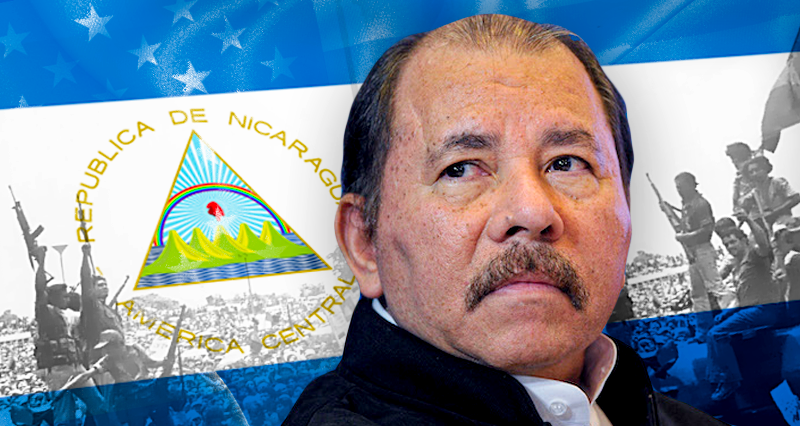
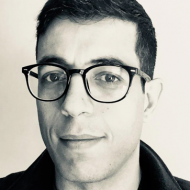
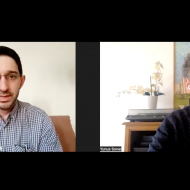
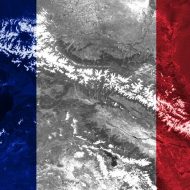
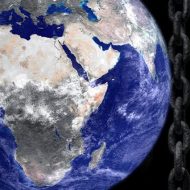

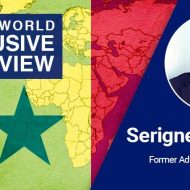
Leave a Reply